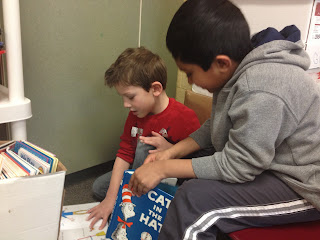Feed sacks, plain and colorful, were reused and repurposed. Some were used to store vegetables or fruit in root cellars or colorful sacks could have been made into kitchen dishcloths, dresser runners, or even clothing. Kitchen tools could have been made from wood like the masher above and a little metal pail could have been a lunch pail and even used for collecting berries or grapes.
Wooden cutting board with woodburning design on left. In the middle is a metal bread plate on which a loaf of bread would have been wrapped in a cloth. The inscription on the plate says "Give Us This Day, Our Daily Bread". On the right, aluminum plates and candy dishes were popular in the 1930's.
Quilts were made with material from old clothes, feed sacks, or excess fabric and had many different patterns. On the rocking chair is a double wedding band design and is a family heirloom. Women would sometimes have quilting get togethers as well as trade material. Porcelain enamel bowls, pitchers and tableware were popular in the earlier 1900's. Before indoor plumbing, pitchers and bowls would have been used to wash off your face in the morning and night.
Darning Egg Wood Sock Mending Tool on the far left (even socks were mended after getting holes, very little was wasted long ago) and a oil glass night light lamp.
Embroidery, crochet, and lacework were all sewing methods mothers would teach their daughters.























